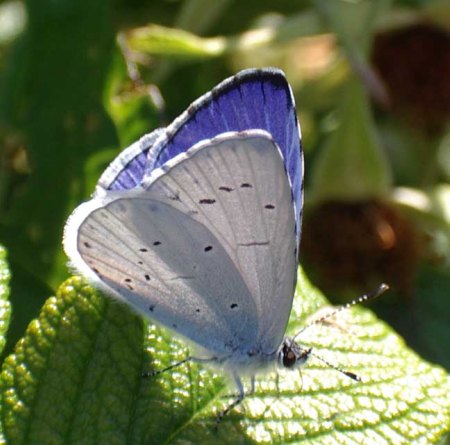Nature in trouble
Britain’s wildlife is in crisis according to new reports from charities

Astudy by 25 wildlife charities concludes that Britain's nature is in trouble, with 60% of the 3,148 species it examined in decline and more than one in 10 in danger of extinction. State of Nature is the latest biodiversity ‘stocktake' and follows this month's Government-financed study into the effect of climate change on biodiversity (Town & Country, May 15).
State of Nature variously blames climate change, wildlife crime, the proliferation of conifer forests, spreading urbanisation, the reduction in mixed farming, pesticides, over-stocking, over-fishing, over-grazing-when the uplands were denuded of sheep due to foot-and-mouth in 2001, some rare plants flourished-tourism on sand dunes, the sale of playing fields and the reduction in allotment space.
The report also takes a side-swipe at grouse-moor owners for intensive burning, at people who renovate old buildings populated by bats, at dog walkers on heathland, and at gardeners who favour non-native plant species and put in decking. It points out that brownfield sites, the ones most likely to be built on, can show incredible biodiversity. No mention is made of natural predation by corvids, raptors, mink, badgers and foxes, nor are there recommendations for managing nature in future, although the deer population is cited as a problem in woodlands.
Sir David Attenborough, who launched the study, points out that, as the British population increases, there is less room for Nature. He says the report is ‘a stark warning', but also a ‘sign of hope' because British people are so passionate about conservation and our wildlife and habitats are so diverse.
* Subscribe to Country Life and save; Get the Ipad edition
Other organisations have given their reactions. The Soil Association says more intensive farming is ‘having a catastrophic effect' and calls on the Government to increase support for organic farming. The NFU counters that farming is a positive force for the environment, with initiatives such as the Campaign for the Farmed Environment and Defra's 50,000 stewardship schemes.
‘State of Nature reports that wildlife populations have changed significantly over the last 50 years, but no area of our economy or society has stood still over this same period,' says NFU's deputy president Meurig Raymond. CLA president Harry Cotterell adds: ‘It's unfair to blame farmers when there are so many other contributing factors.'
Exquisite houses, the beauty of Nature, and how to get the most from your life, straight to your inbox.
The GWCT's communications and public affairs director Tom Oliver suggests that ‘inspiration not recrimination' is needed. The GWCT's 10-point action plan focuses on cooperation, localism, flexibility and having precise goals, perhaps based around a handful of species.
Chief executive Teresa Dent comments: ‘The most important thing is to work more closely with the people who manage land and to be very focused about the results you want. Game conservation teaches you that because it's about producing a surplus-wildlife conservation is about producing an abundance.'
The National Gamekeepers' Organisation say they should have been consulted as they manage habitat over an area nine times the size of reserves and national parks combined. ‘We are clearly an effective force for conservation,' says a spokesman.
What's happening where?
On the farm Some 76% of the 97 food plants favoured by bumblebees are declining, as are small rodents, pipistrelle bats and hedgehogs; badgers and wood pigeons (left) are increasing; hares, horseshoe bats and some birds are stabilising.
On the heath Semi-natural, lowland grassland was reduced by 97% between the 1930s and mid 1980s, affecting natterjack toads (below) and flowering plants, as well as butterfly and lizard populations.
On the water Kingfishers (right), dippers and water voles are declining, as are some 40% of native fish, including Atlantic salmon, yet 74% of birds are increasing, such as the mallard, bittern and little egret.
On the coast Some 60% of the 682 coastal species studied are declining and 13% of flowering plants could become extinct.
In the woods Bird and butterfly popu-lations are dropping; 30 of the 262 flowering plants are on the national Red List. Great spotted woodpeckers (below) seem to be benefiting from reduced management of mature woodlands.
In the uplands Some 178 flowering plants are at risk, including the Snowdon lily (right), which was left over from the Ice Age; 14 mosses and liverworts are now extinct.
In town Although wildlife is increasingly urbanising-with red squirrels in Belfast, otters in Edinburgh, kittiwakes in New-castle and foxes and peregrines (pictured) in many cities-59% of the 658 urban species studied are declining, including the house sparrow, swift and many invertebrates
* Follow Country Life property on Twitter
Country Life is unlike any other magazine: the only glossy weekly on the newsstand and the only magazine that has been guest-edited by His Majesty The King not once, but twice. It is a celebration of modern rural life and all its diverse joys and pleasures — that was first published in Queen Victoria's Diamond Jubilee year. Our eclectic mixture of witty and informative content — from the most up-to-date property news and commentary and a coveted glimpse inside some of the UK's best houses and gardens, to gardening, the arts and interior design, written by experts in their field — still cannot be found in print or online, anywhere else.
